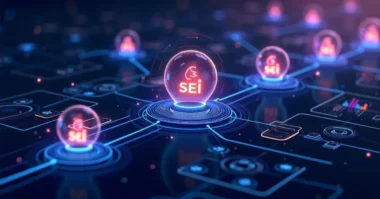Table of Contents
- What is Faraday Future?
- The Rise of Faraday Future Stock
- Why Did Faraday Future Stock Fall?
- Leadership and Management Issues
- Market Sentiment and Speculation
- Competition in the EV Market
- Regulatory and Legal Challenges
- Strategic Partnerships and Future Plans
- Faraday Future Stock Performance in 2024–2025
- What Investors Should Know Before Buying?
- Conclusion
Faraday Future stock has captured the interest of investors looking for innovation in the electric vehicle (EV) space. While the company’s mission to reshape the future of transportation is bold, its stock journey has been anything but smooth. From early hype and setbacks to fresh hope and volatility, understanding this stock means looking at more than just the price chart.
What is Faraday Future?
Faraday Future is an American EV company founded in 2014. Its goal is to build high-tech, luxurious electric vehicles. The company’s flagship vehicle is the FF 91, an electric car aimed at the premium market. Faraday Future promotes itself as a pioneer in smart mobility, focusing on user-centered features, connectivity, and clean energy.
While the idea sounds promising, the road to production has been long and bumpy. From internal struggles to leadership changes and delayed car launches, the company has often made headlines for the wrong reasons.
In recent months, the company has also shown renewed focus on refining its business model and exploring strategic markets. Faraday Future’s goal of becoming a leader in connected EV technology still holds value in a rapidly transforming auto industry.
The Rise of Faraday Future Stock
Early Hype and Investor Excitement
When Faraday Future announced its public listing via a SPAC (Special Purpose Acquisition Company) merger in 2021, there was a lot of excitement. The EV industry was booming, and investors were eager to find the next Tesla.
- The company promised innovation in battery tech and AI.
- Big dreams attracted retail investors and media attention.
- Hype caused a temporary price surge post-listing.
Many people saw this as a ground-floor opportunity and rushed to buy shares. The stock price saw a temporary high fueled by expectations rather than performance.
Why Did Faraday Future Stock Fall?
1. Missed Deadlines and Production Delays
One of the main reasons for the stock’s fall was the repeated delay in delivering its flagship EV, the FF 91.
- Promised release dates were pushed back.
- Investors lost confidence due to a lack of visible progress.
- Market confidence dropped after failed production targets.
These delays also pushed suppliers and partners to hesitate in their commitments, further slowing down development timelines.
2. Financial Instability
The company has struggled with finances over the years.
- Faraday Future often reported high losses.
- Cash burn was a concern, especially without product delivery.
- The company had to raise funds frequently, often diluting shareholder value.
- These financial issues made it difficult for investors to stay optimistic.
The ongoing need to secure short-term funding created uncertainty and often caused short-lived spikes or dips in stock value depending on market perception.
Leadership and Management Issues
Leadership plays a huge role in any company’s success. Faraday Future has seen multiple CEO changes and executive-level exits. These shifts in leadership signaled instability to the market.
- Internal disputes and resignations raised red flags.
- Ongoing investigations and lawsuits added pressure.
- Lack of clear leadership affected long-term vision.
The lack of stable management led to a shaky investor outlook and caused the stock to underperform.
To build credibility, Faraday Future has recently tried to bring in more experienced executives from the tech and automotive sectors. This may help restore some trust if the company can show results.
Market Sentiment and Speculation
Stock prices are not always based on a company’s actual performance. Sometimes, sentiment and speculation drive the price.
Social Media and Hype Cycles
Platforms like Reddit, Twitter, and YouTube played a big role in pumping up Faraday Future stock at times.
Retail investors often bought in based on hype.
- These cycles caused short-term rallies.
- The price would drop once the buzz faded.
- This up-and-down behavior is typical of speculative stocks.
Emotional trading and bandwagon investing influenced the stock’s short-term behavior, especially during periods of EV industry buzz.
Competition in the EV Market
The EV space is growing fast, but it’s also becoming crowded. Big names like Tesla, Rivian, and Lucid have more capital and market share.
- Faraday Future struggles to compete in tech and trust.
- Brand awareness is low compared to rivals.
- Lack of production gives competitors a head start.
The crowded market leaves little room for unproven companies to thrive without strong backing and execution.
Faraday Future must differentiate itself not only through design but also by offering something more, like next-level AI integration or user-centric experiences.
Regulatory and Legal Challenges
Faraday Future has faced several investigations, including those from the SEC.
- Allegations of misleading investors.
- Probes into company statements and disclosures.
- Legal costs added to financial stress.
These regulatory issues scared off risk-averse investors and contributed to the stock’s fall.
Although some legal matters have been settled, the company still carries a reputation of uncertainty that it needs to rebuild with transparency.
Strategic Partnerships and Future Plans
Despite setbacks, Faraday Future has shown signs of strategic recovery.
- The company entered new funding deals.
- Announced progress in testing the FF 91.
- Plans to enter international markets in the future.
Faraday Future is also exploring technology partnerships with firms in battery tech, AI, and autonomous systems. These partnerships can help the company gain an edge if well-executed.
While it’s still early, these steps show Faraday Future is trying to fix its past mistakes and regain trust.
 Faraday Future Stock Performance in 2024–2025
Faraday Future Stock Performance in 2024–2025
The past year has seen continued volatility.
- Minor production progress has not yet resulted in wide-scale delivery.
- The stock remains speculative with high short interest.
- Price swings are based more on news than performance.
Investors continue to watch for any real proof that the company can mass-produce vehicles and turn a profit.
Some analysts believe the company could become a takeover target if it stabilizes, especially as larger EV players seek new technologies.
What Investors Should Know Before Buying?
Before investing in Faraday Future stock, consider these key points:
- Volatility: Price changes quickly, often with news.
- Speculation vs Reality: Most gains have come from hype, not sales.
- Dilution Risk: Frequent fundraising lowers share value.
- Execution Risk: Can the company deliver cars at scale?
If you’re a long-term investor, understand that this stock comes with high risk but also potential high reward, if the company succeeds.
It’s smart to track the company’s quarterly filings, investor calls, and vehicle delivery milestones before committing capital.
Conclusion
Faraday Future stock tells a story of bold dreams but rocky execution. The ups came from hype, promises, and potential. The downs came from delays, poor leadership, financial issues, and market pressure.








